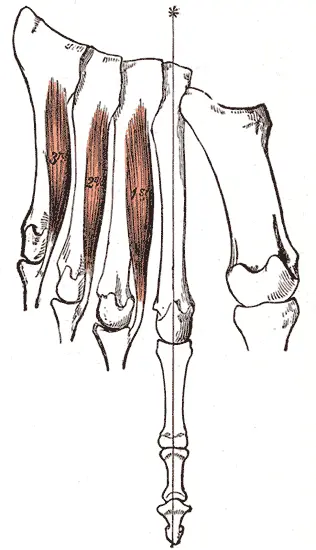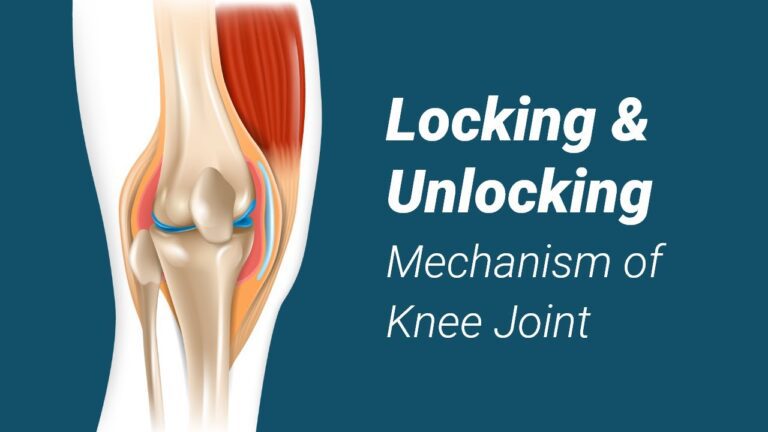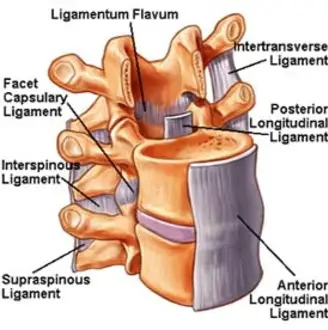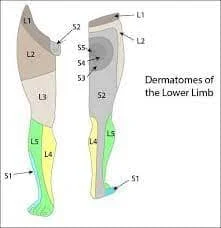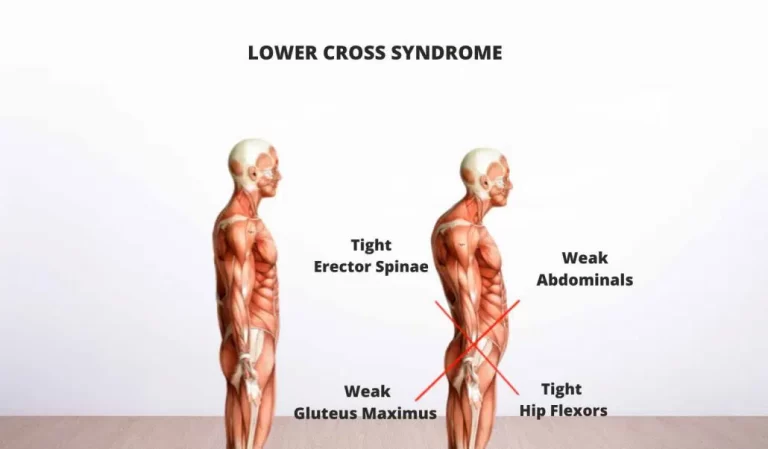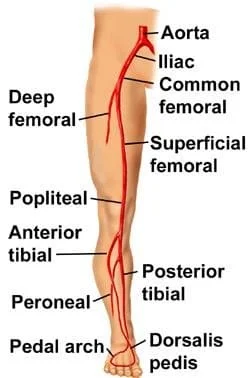Plantar interossei muscles Origin, Insertion, Function, Exercise
Table of Contents
Introduction
- Plantar interossei muscles are a group of three small muscles located in the central compartment of the sole of the foot. As the foot muscles can be divided either from lateral to medial into 3 groups or from superficial to deep into four layers, plantar interossei can be classified in 2 ways:
- They can be considered as part of the central plantar muscle group with the flexor digitorum brevis, quadratus Plantae, lumbricals & dorsal interossei.
- Alternatively, they can be discussed as part of the 4th layer of plantar muscles (interosseous compartment), along with the dorsal interossei.
- Plantar interossei are invested by the plantar interosseous fascia & accompanied by the dorsal interossei muscles. Plantar interossei are smaller than their dorsal counterparts & lie below the metatarsal bones.
Origin & insertion of Plantar interossei muscles
- Plantar interossei muscle are the 3 fusiform, unipennate muscles, meaning that the fibers of each muscle are obliquely arranged & attaches to one side of the tendon. Each muscle arises from the medial plantar site of the 3rd to 5th metatarsal bones, respectively.
- The muscle fibers course anteriorly, crossing the medial side of the metatarsophalangeal joint to give off a tendon at the level of the head of the respective metatarsal bone. After passing deep to the deep transverse metatarsal ligament, the tendon of each muscle attaches to the medial base of the proximal phalanx & extensor expansion of the corresponding toe.
- Recall that the extensor expansion of the foot is a hood-like, triangular aponeurosis of the extensor digitorum longus muscle that supplied a point of attachment for the extensor muscles. It is the same but smaller than, the extensor expansion of the hand.
Structure
- The 3 plantar interosseous muscles are unipennate, as opposed to the bipennate structure of dorsal interosseous muscles, & originate on a single metatarsal bone. The 3 muscles originate on the medial aspect of metatarsals III-V. The muscles cross the metatarsophalangeal joint of toes III-V so the insertions correspond with the origin & there is no crossing between my toes.
- The muscles then resume distally along the foot & insert in the proximal phalanges III-V. The muscles cross the metatarsophalangeal joint of toes III-V so the insertions correspond with the origin & there is no crossing between toes.
Relations
- Plantar interossei are situated superficial to dorsal interossei & deep to muscles of the 3rd layer of the sole; flexor hallucis brevis, adductor hallucis & flexor digit minimi brevis. Plantar metatarsal arteries run parallel to the medial borders of the plantar interossei muscle.
Functions of Plantar interossei muscles
- Plantar interossei have three main actions; they flex and adduct the 3rd, 4th & 5th at metatarsophalangeal joints & extend the 2nd to 4t toes at the interphalangeal joints. These activities are mainly during the push-off phase of running or walking as they maintain the position of the 3rd to 5th toes & prevent them from thrusting apart once the body weight is put into the forefoot.
Etymology
- In the English language, this muscle’s name is for the name of the muscle between the bones on the sole of the foot.
- Latin terms inter meaning “between” & os meaning “bone” is where Interossei arises From The Latin word planta for “the sole of the foot,” which arises from the Greek plata meaning “flat” is, where the word plantaris generally originates from.
Nerve supply
- Plantar interossei muscles are supplied by two branches of the tibial nerve; the medial 3 muscles are supplied by the deep branch of the lateral plantar nerve (S2-S3) while the most lateral plantar interosseous muscle (of the 4th interosseous space) is innervated by the superficial branch of this nerve.
Blood supply
- The blood supply of the plantar interossei a from the posterior tibial artery, via the lateral plantar artery and its branches; deep plantar arch, plantar metatarsal, and dorsal metatarsal arteries.
Clinical importance
- Loss of function of the plantar (& dorsal) interossei will result in unopposed flexion of the toes. This is generally described as a claw-toe deformity & is associated with the denervation of the muscle. There are some denervation syndromes that might be considered when this deformity is seen.
- 1 example is Charcot-Marie-Tooth disease, which is a hereditary sensorimotor neuropathy that affects the peripheral nervous system. It source progressive muscular atrophy & sensory loss.
Plantar interossei muscles exercises

Heel walking
- Heel striking is what we are avoiding, but heel walking is a great way to strengthen the anterior lower leg muscles Roll back on the heels & walk forward balancing yourself on the heels for about 30 seconds, then take a 30-second break and repeat 2 more times.
Deep squats on your forefoot
- Roll up onto the forefoot then squat down into an almost sitting position, trying to keep the balance & avoid shifting back onto the heels. Pause this pose for 30 seconds then stand up for 10 seconds & repeat 5 more times. When you get good at this, try holding a weighted bar at your shoulder level & then squatting.
Inner foot strengthening with a resistance band
- This targets the medial muscles; the posterior tibial muscle & abductor hallucis. Tie the resistance band on a chair leg then use your medial muscles to pull the band toward the center of the body. Another option is to hook the band around the foot, then use the other foot to stabilize it. Pull the foot toward the midline of the body. Hold for 10 seconds then relax for 10 seconds. Repeat 10 times. (An alternative is to balance on the inside of your foot & walk for 30 seconds, following the pattern of heel walking.)
Outer foot strengthening with a resistance band
- Tie the resistance band on a chair leg then use the lateral muscles to pull the band toward the outside of the body. Another option is to hook the band around the foot, then use the other foot to stabilize it. Then move the foot towards the outside of your body. Hold for 10 seconds and then relax for 10 seconds. Repeat 10 times. (An alternative is to balance on the outside of your foot & walk for 30 seconds, following the pattern of heel walking.)
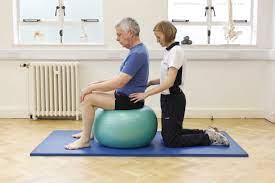
Proprioceptive/Balance Training
- Balance on 1 foot with another leg bent. Hold for 30 seconds. Repeat 5 times. When you get good, then roll up onto your forefoot. If you are a pro, then put a 5-pound weight in the opposite hand & touch your toes while balancing on your forefoot. (An alternative progression is to go from one leg on forefoot on level ground, to a foam mat then a Bosu ball or wobble board.)
- These simple exercises can help you strengthen the intrinsic muscles of your feet and lower legs to help you transition to a minimalist running style
The big toe, little toe
- Being able to disassociate the toes is important as the awareness & control you develop from this plays a huge role in the stability and strength of your feet.
- initiate with a stable arch position.
- Lift the big toe up without your little toes leaving the ground.
- Reset & then lift your little toes without your big toe leaving the ground.
- perform these toe movements while maintaining a stable arch position.
Toe raise, point, & curl
- Toe raise, point, & curl three-part exercise will initiate getting your toes & feet moving.
- Sit in a straight-backed chair with your feet flat on the ground.
- Keep the toes flat on the ground & raise your heels until only the balls of your feet & toes touch the ground. Hold for 5 seconds.
- Point the toes so that only the ends of your big &,2nd toes touch the ground. Hold for 5 seconds.
- Maintain your heel off the ground and roll your toes under so that the tops of your toes touch the ground. Hold for 5 seconds.
- Repeat each position 10 times.
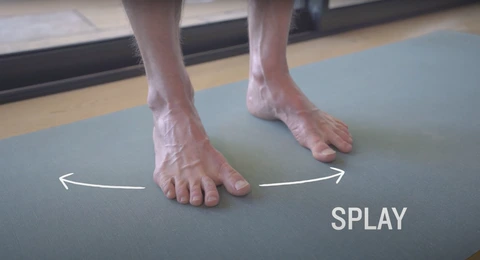
Big toe abduction
- The big toe abduction exercise is probably the most challenging of the bunch. While maintaining the little toes relaxed, bring the big toe in towards the midline of your body and back. Avoid allowing the foot from collapsing in or pronating, isolate this movement to the big toe!
Toe splay
- Toe splay movement will assist you to gain control over the toe muscles.
- Sit in a straight-backed chair with your feet slowly resting on the floor.
- Roll out all the toes apart as far as comfortable. Hold for 5 seconds.
- Repeat 10 times.
- You can make the toe splay exercise harder by looping a rubber band around the toes of both feet.
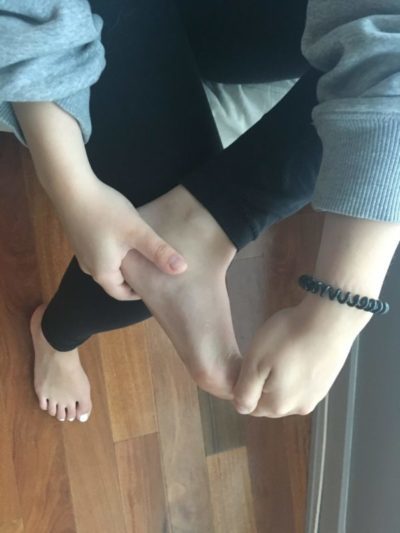
Toe extension
- Toe extension stretch is good to prevent and treat plantar fasciitis, which causes heel pain.
- Sit in a straight-backed chair with both feet flat on the ground.
- Pick 1 foot up & place it on the opposite thigh.
- Grab the toes with one hand & pull them up toward your ankle until you feel a stretch along the bottom of your foot and in your heel cord.
- Massage the arch of the foot with the other hand during the stretch. Hold for 10 seconds.
- Repeat 10 times on each foot.
Elevated holds (Assisted)
- Aside from contributing to the overall stability of the foot, a major role of the big toe is to assist you to drive into the floor when walking, running, or jumping. Loading this in training is mainly so that your body can handle the stresses placed on it in function.
- Elevate the foot in between 2 plates (you could use books as well) so that only the big toe and your heel is in contact with the plates. Drive your big toe down, while using the other leg as much as you need to maintain balance & support.
Elevated holds (unassisted)
- As above, without assistance from the other leg.
Toe curls
- Toe curls exercise will strengthen the muscles on the top of your feet & toes.
- Sit in a straight-backed chair with your feet flat on the ground.
- Lay a kitchen towel or hand towel on the floor in front of you so the short end is at the feet.
- Put the toes of one foot on the end of the towel, & scrunch the toes so you pull the towel toward you.
- Repeat 5 times with each foot.
- You can increase the difficulty of
- the toe curls exercise by placing a small weight (like a can of soup) on the far end of the towel.

Marble pickup
- The marble pickup exercise will strengthen the muscles on the bottom of your feet & toes.
- Sit in a straight-backed chair with your feet flat on the ground.
- Place 20 marbles & a small bowl on the floor in front of you.
- Pick up one marble at a time with the toes & place it in the bowl. Use 1 foot to pick up all 20 marbles.
- Repeat with the other foot.
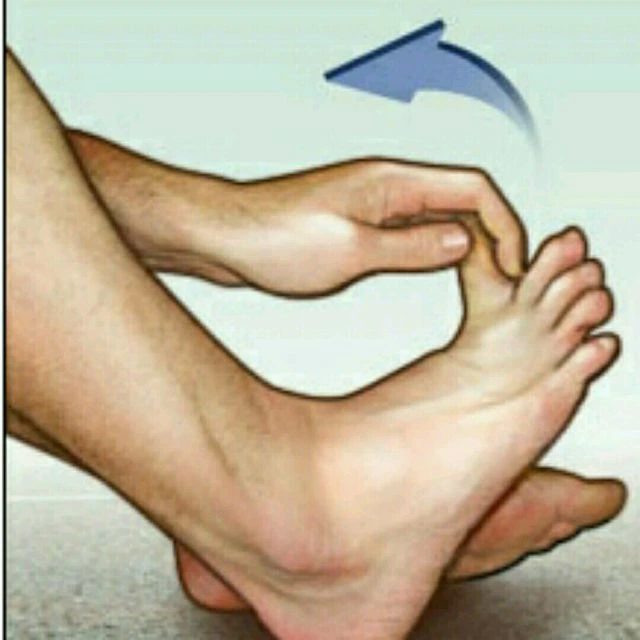
Big-toe stretch
- Keep a good range of motion in the big toe with this three-part stretch. It feels good after having the feet crammed in dress shoes all day.
- Sit in a straight-backed chair with your feet flat on the ground.
- Pick 1 foot up & place it on your opposite thigh.
- Slowly use your fingers to stretch the big toe up, down, & to the side away from the other toes. Hold the stretch in each direction for 5 seconds.
- Repeat 10 times in each direction.
- Repeat with the opposite foot.
Towel crunches
- Your foot has tiny intrinsic muscles that stabilize the toes called the interossei & lumbricals. A great way to strengthen them is to put the foot on a towel & crunch your toes. Do this 10 times, then take a 30-second break & repeat to complete three sets of ten. When you get good at this, replace the towel with a pen or marker & grab it with your toes.
FAQ
Functions. Plantar interossei have three main actions; they flex and adduct the 3rd, 4th, and 5th at the metatarsophalangeal joints and extend the 2nd to 4t toes at the interphalangeal joints.
In human anatomy, plantar interossei muscles are three muscles located between the metatarsal bones in the foot. Plantar interossei muscles. The Interossei plantares.
three
The Interossei plants (Plantar interossei), three in number, lie beneath rather than between the metatarsal bones, and each is connected with but one metatarsal bone.
Although small, the dorsal interossei are strong muscles that in synergy with the plantar interossei flex the lateral three toes at the metatarsophalangeal joints. This action is important as it positions the toes in a way that flexor digitorum longus and brevis can perform their activity during jumping and running.
The dorsal interossei muscles are a group of four bicephalic feather-shaped muscles that fill the space between the metatarsal bones of the foot. Their function lies in spreading the toes apart and in flexing the metatarsophalangeal joints of the second to the fifth toe.

